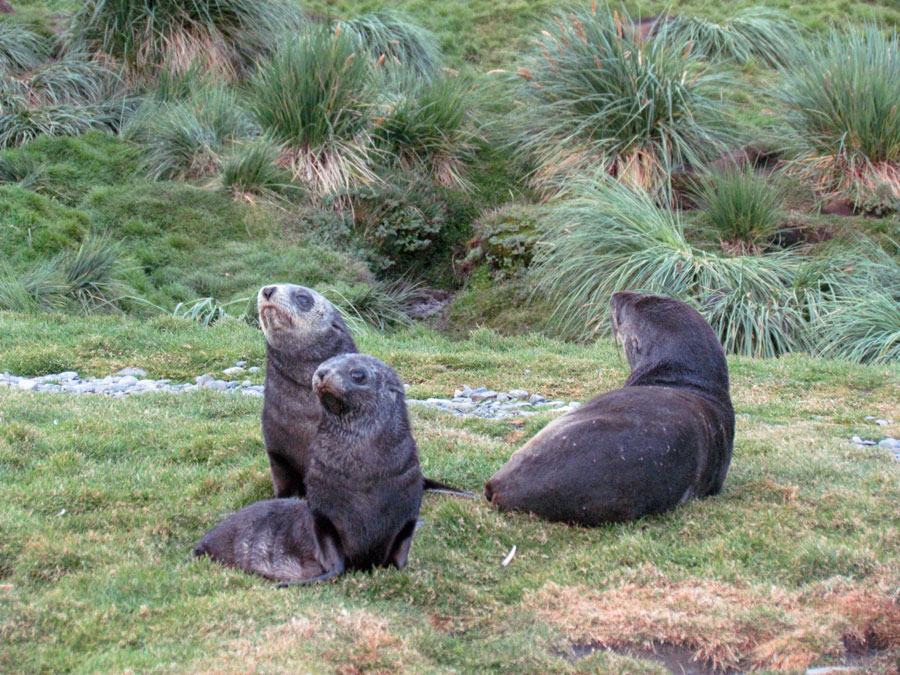
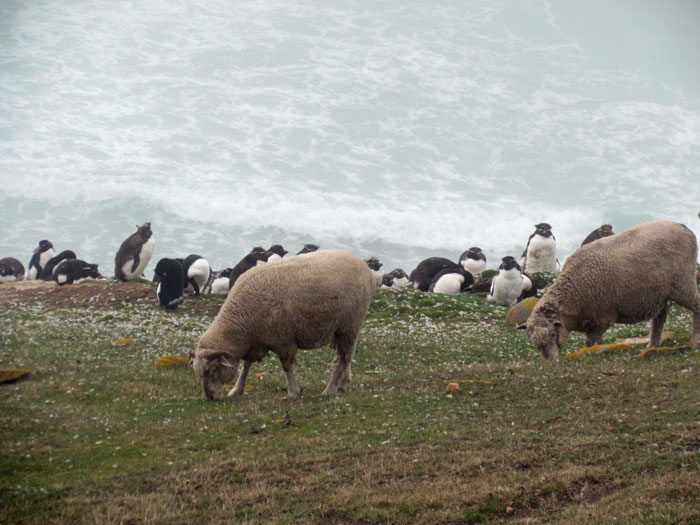
Antarctica via Argentina, February-March 2015
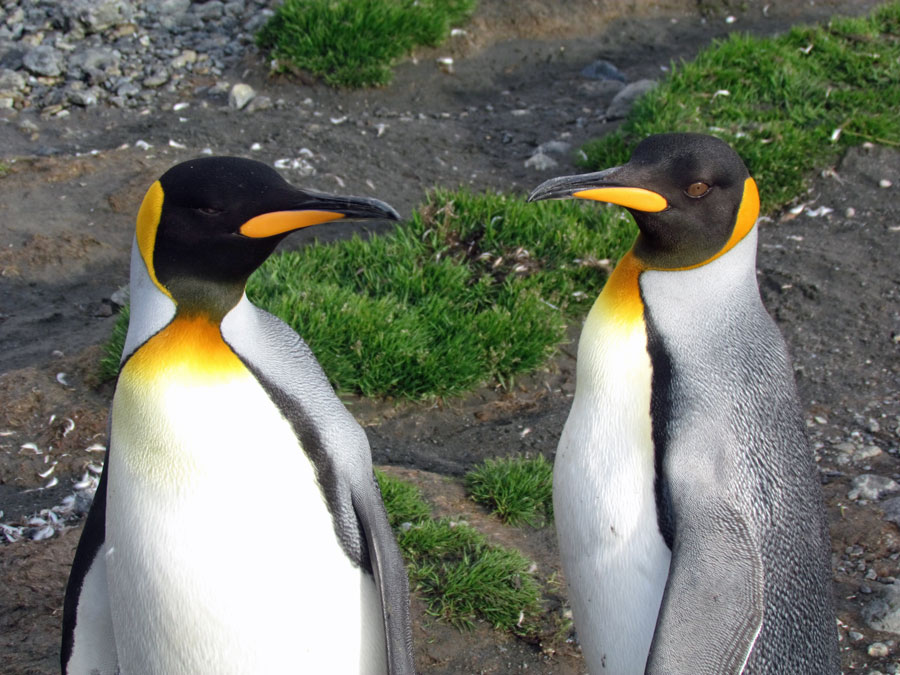
Ushuaia, at the tip of Argentina, is the southern-most city in the world. When we visited in 2002, we learned that it was the starting point for voyages to the Antarctic Peninsula. This time we decided to see it for ourselves. Thus on the afternoon of February 13 we boarded Plancius. By 6:00 p.m. we were heading out the Beagle Channel on our way to the ocean and points south.


Plancius resembled the boats we had taken in the Arctic. (Indeed, come June it too would be up there.) It carries slightly more than 100 passengers and 47 crew. Among the latter were folks from Russia (the captain), Netherlands (where the ship is registered), England, Scotland (many), Indonesia, Tasmania (also known as Australia), Germany, Switzerland, Sweden and the Philippines. The passengers also had a European emphasis, with close to half in a group of German-speaking scuba divers (yes!). They sat at their own long dining table and had occasional cultural conflicts with the rest of us, partly because they wanted people to step aside so they could take photos with their enormous lenses. Only four other Americans, quite a few Brits and Aussies, four Chinese (though at times there mysteriously seemed to be six or even eight), some from Sweden, Italy, France, Belgium etc.
We began with the customary cocktails welcome and lifeboat drill. There were two such boats; they looked like big plastic gherkins. It was hard to believe they could accommodate all 155+ of us in the ocean, but we never had to find out.
Our home for the next 18 nights was a relatively roomy 4th-deck cabin with a window (not just a port hole). It had its own bathroom, shower included, and modest storage space. That evening we had the first of our 56 on-board meals. Breakfasts were buffets, as were some of the lunches. Dinners were always served: appetizer, choice of main (meat, fish, or veg), and dessert. No arranged seating, except for the scuba divers. Menus were in English and German. The food was very good.
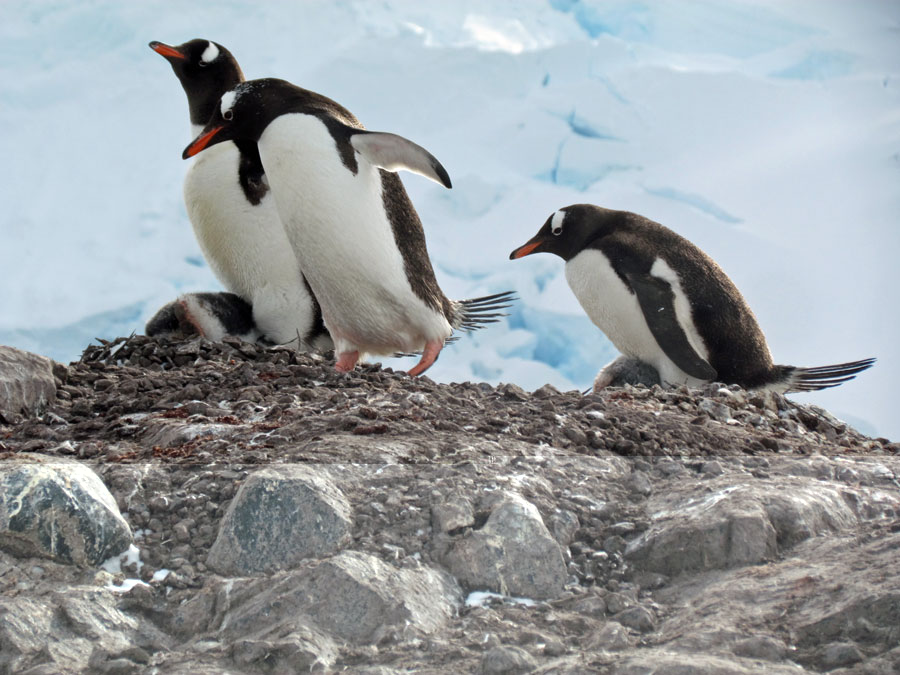
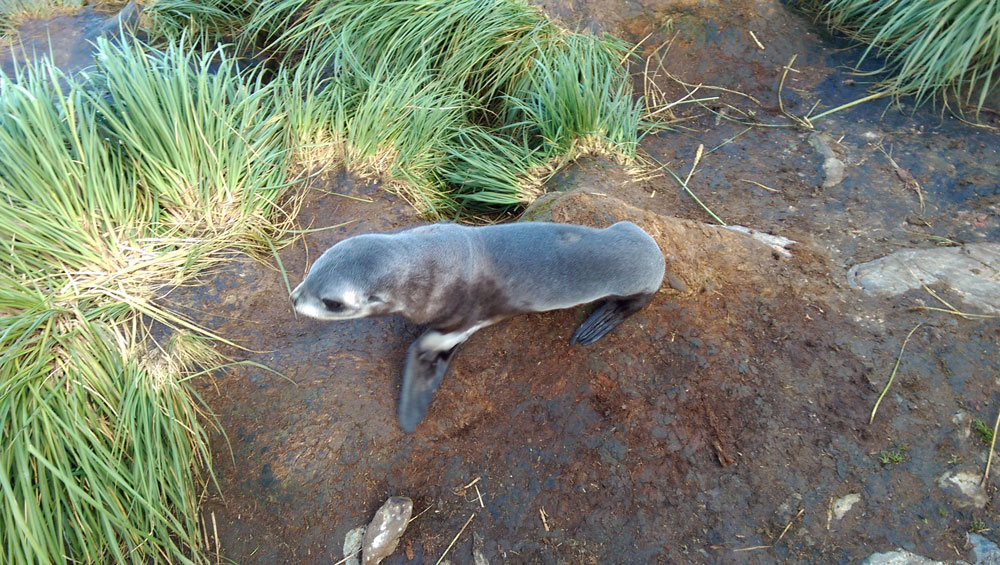
Exiting the Beagle Channel, we headed not south but east. Our first stop was the Falkland Islands. Note: when in Argentina, call these the Malvinas. Despite the outcome of the brief 1982 war, Argentinians still think they own the place. The British have just sent a couple of helicopters to live there, just in case. The ship made about 12 knots. At times the wind picked up, so you knew you were at sea. You are advised of “movement on the ship.” This means it’s hard to stay on your feet or feel very well. We prudently carried pills (Dramamine). The dining room tables are fastened down, but a couple of times we had to cling to the table edges to keep the chairs from sliding into the walls or into each other. This made eating a challenge. We were informed of the two worst moments in sea-sickness:
1) When you think you will die;
2) When you know you won’t.
We reached the Falklands after two nights and a day. Here we made the first of our 13 landings on the trip. Readers of our Arctic accounts will be familiar with the drill. The ship anchors a few miles offshore. We passengers dress warmly, fasten our life jackets, and descend the starboard ramp to board the zodiacs. Each of these sturdy rubber crafts can seat ten or twelve, plus the driver (40 m.p.h. Yamaha outboards, as usual). Upon landing, you slide to the front, swing you legs seaward and disembark. The landing were almost all “wet,” but the ship had lent us very sturdy rubber boots. The water is no more than a foot deep, but it is still possible to fall in. I did. I may have been the only member of the entire trip to accomplish this. The water was very cold. I had the most fun since falling off a camel onto the Gobi Desert in 2004.
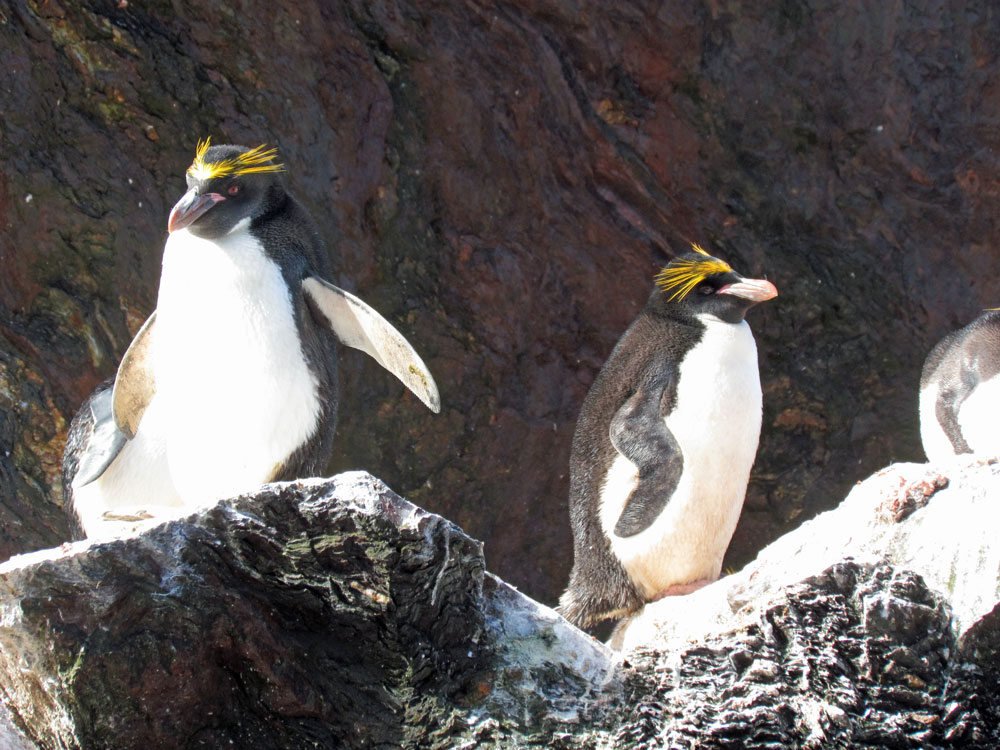
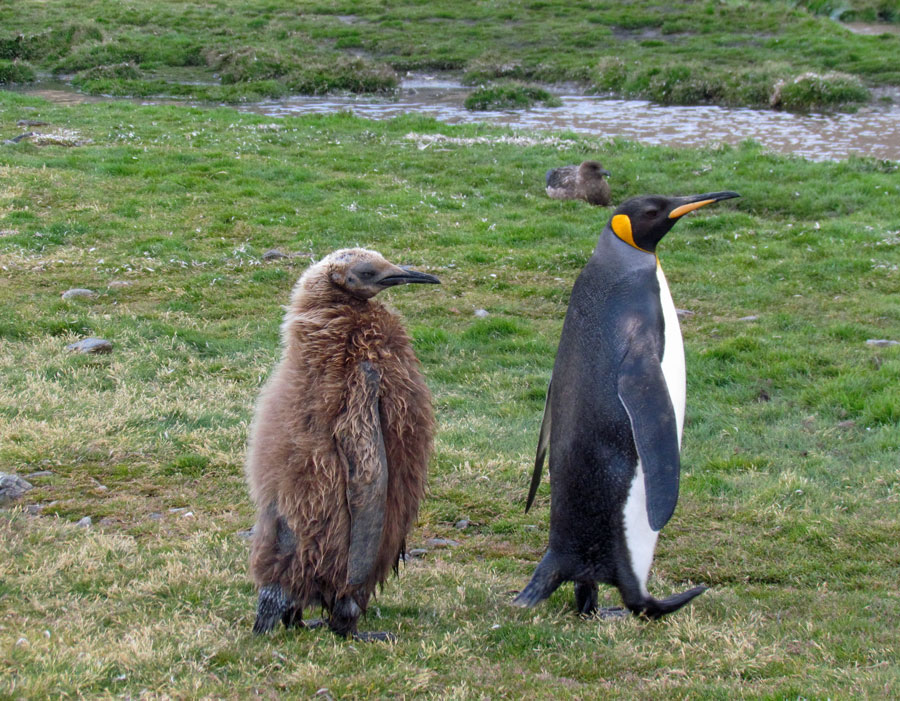
First stop was the alarmingly-named Carcass Island. It was in fact a pleasant place, even warm (50°). We saw our first of many thousands of penguins. There are 17 types, of which we encountered seven. I had best not go into all this. The couple who own the island provided pastries and coffee. In the afternoon we visited another island, Saunders. Sheep mingled with lots more penguins: Gentoos, Magellinics in and out of their burrows, Rock Hoppers and Kings (biggest of all except the Emperors, which we did not sail far enough south to see).
We had one more morning in the Falklands, at its capital, Stanley, population 2450. It looks like a small English town from the 1950’s. Trees have been planted (they don’t grow naturally in these islands). We visited a small supermarket and museum. Pounds, euros, dollars and credit cards happily accepted. By 11:00 the wind had risen, eventually to 48 knots, and we were called back to the ship--the only such incident on the voyage. Fishing boats were also ordered out of the harbor.
A couple more days sailing, with some movement on the ship, brought us to South Georgia. We had begun to see icebergs, some wildly contorted, some flat (tabular). These can be more then 25 miles long. On the map South Georgia resembles a big banana. On the ground it is a fearsome black-and-white montage of glaciers and sharp peaks. We made many stops along its north coast. We saw birds (gulls, skuas, albatross etc.), many varieties of seal and thousands more penguins. The skuas prey on penguin chicks. The seals and penguins get along nicely. They are quite approachable, but we were told to keep a reasonable distance so as not to disturb them.
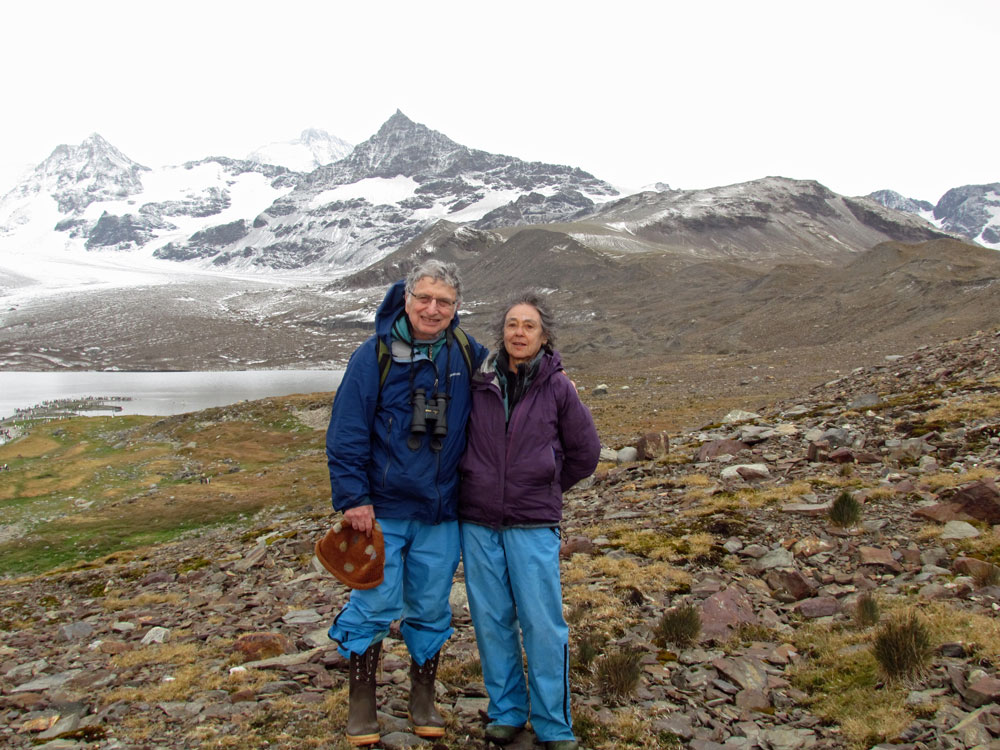
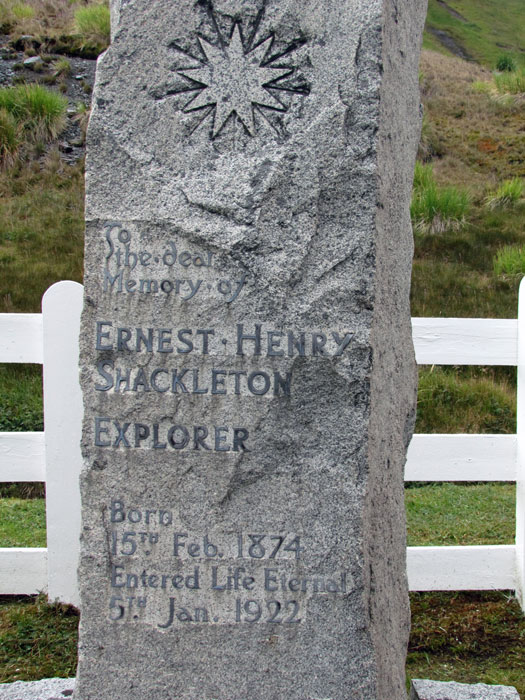
Once there were five whaling stations on the island, but the trade devastated whaling stocks. Now no station is operational. Four are inaccessible because they are falling apart and emitting asbestos. We landed by one of these, Stromness, which all familiar with Antarctic history will recognize as the terminal point in 1916 of Ernest Shackleton’s astounding journey. Along with accounts of Amundsen, Mawson, Scott and other explorers of the region, this narrative is widely available. Words cannot express--at least my words cannot express--the hardships such men endured hardly a century ago. The Antarctic was always cold and remote, but the winters bought months of darkness and blizzard. Living conditions were not exactly comfortable--a considerable contrast with the well-heated Plancius.
At Stromness we walked past an abundance of penguins and seals to the base of Shackleton’s WaterFall. This is where he and two companions completed their 36-hour trek from King Haakon Bay on the island’s southern coast. It is still a dangerous place--a woman was killed here in a fall two years ago. This season two people broke bones. Watch your step.
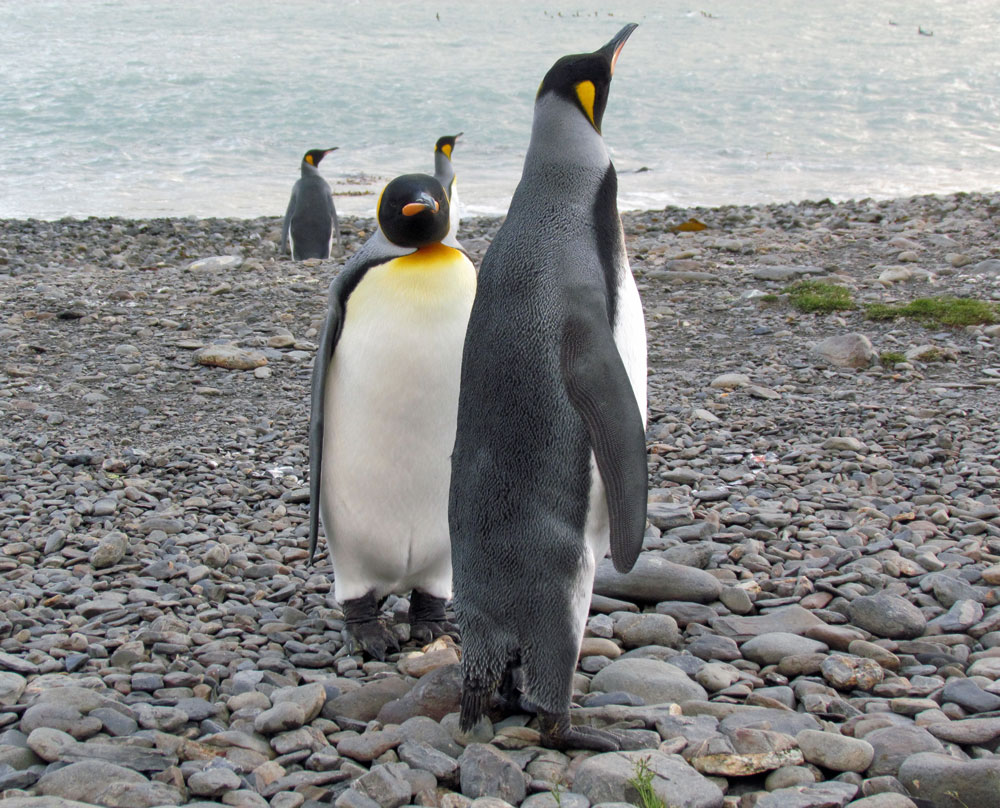
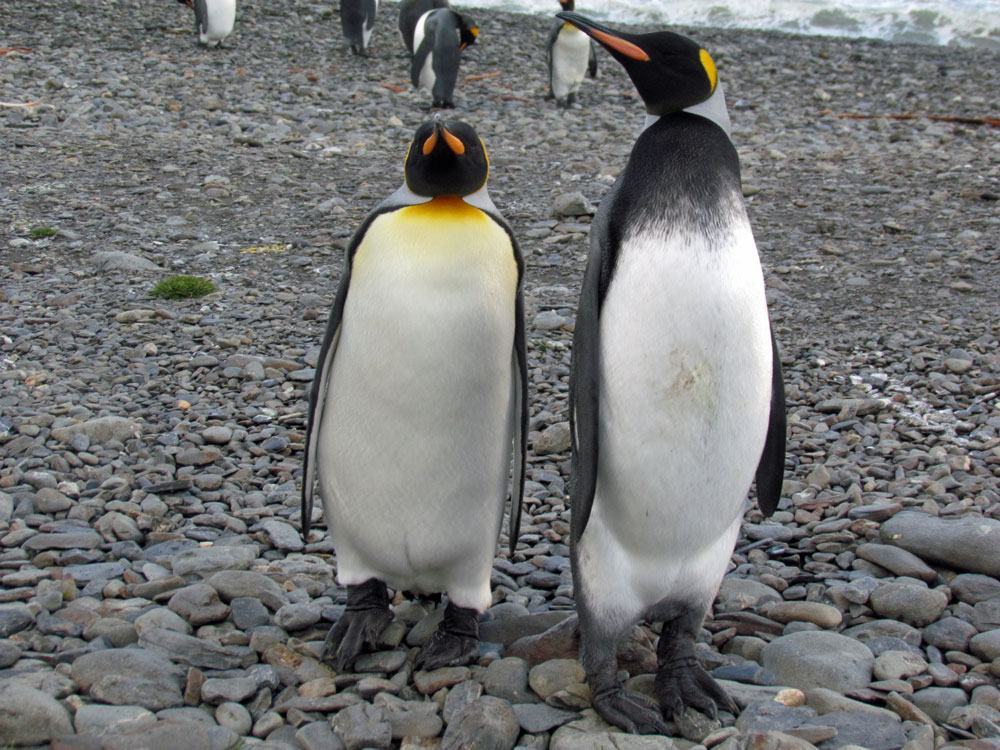
In the afternoon we landed at Grytviken the one whaling station with restored buildings, including a shop and museum. The replica of the open boat that Shackleton and five others sailed 800 miles from Elephant Island was locked away. Some Grytviken folks returned with us to the ship for dinner. By the time they were done, the wind was too high for the zodiacs to take them back. They bunked down in the lounge until 2:00 a.m., when things calmed down.
Our last South Georgia visit, though not a landing,was the most spectacular: the Drygalski Fjord, at the island’s Southeast tip. It is like Norway and Greenland, only more so. It is many miles deep, edged with glaciers and forbidding mountains. The wind reached 35 knots, the sea ice began to congeal, so we beat a retreat before the farthest point.
Now we were heading west and south to the Antarctic proper. We were already below the Convergence--where the Atlantic and Pacific meet to form the Antarctic Ocean. Temperatures had dropped to about freezing in the morning. (Do remember that this is still summer in the region.) Another day of sailing brought us to the South Orkneys. The northeast approach was too icy for landing, but we did succeed from the southeast. This was a triumph, as ice had blocked this place when the ship had visited in January. We visited a small Argentinian naval station, which was preparing a reduced crew for winter. There was a post office, which we of course patronized, a museum, and a lot more penguins.
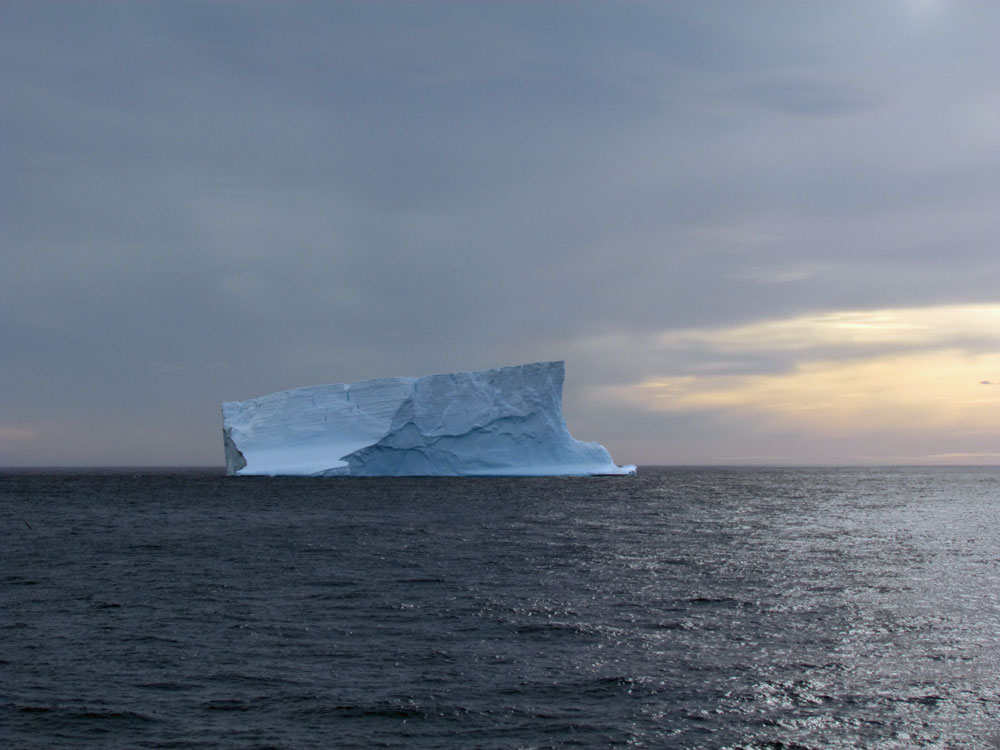
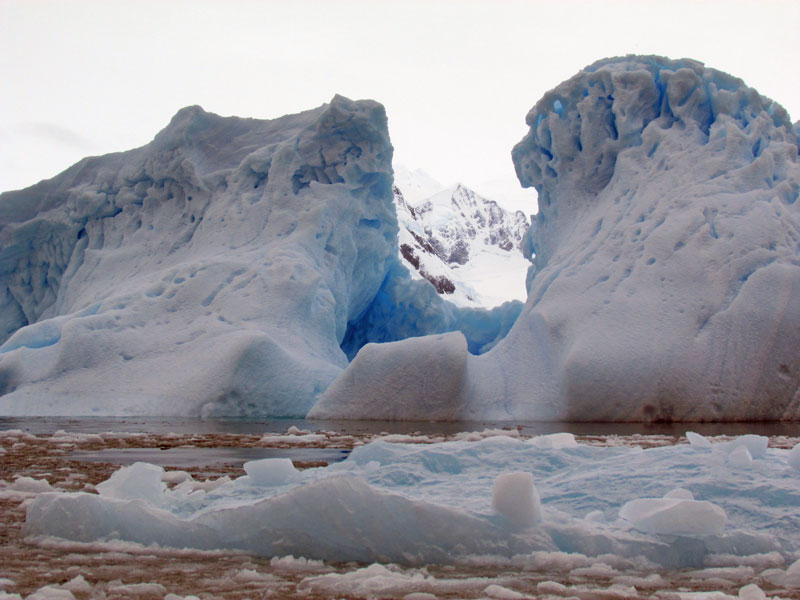
Another day of sailing brought us to the Antarctic Peninsula. You can’t miss this on the map--like a finger pointing up to South America. First landing was at Brown Bluff. This is where I fell in, if you were wondering. Although damp, I continued on a hike up a steep, loose moraine, thence down to a glacier. Many Gentoo penguins, but most of the Adélies had already bred and departed. The wind, ever variable, had rising to 40 knots by the time we returned to the ship. During lunch Plancius entered the Weddell Sea and then the gulf named for the old polar ships, Erebus and Terror. We did not land. With the wind, the temperature felt like 5°. We caught a glimpse of an Orca (“killer whale”) and many seals that were lying on ice floes. These included leopard seals, which can be ten feet long and aggressive. They are however less scary than the elephant seals that we saw elsewhere. Males can weigh four tons and are not cuddly. Don’t mess with them.
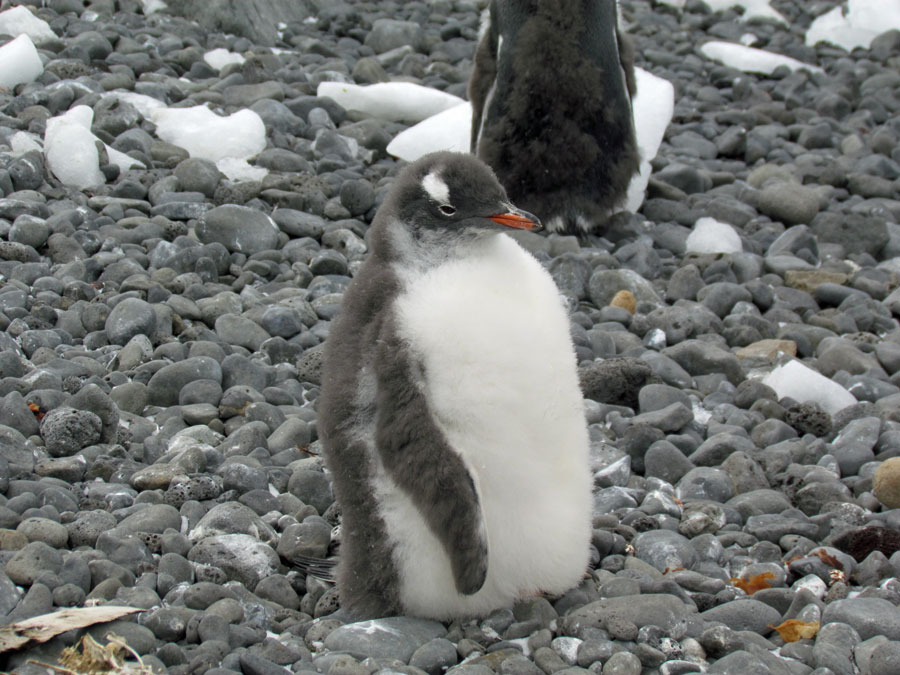
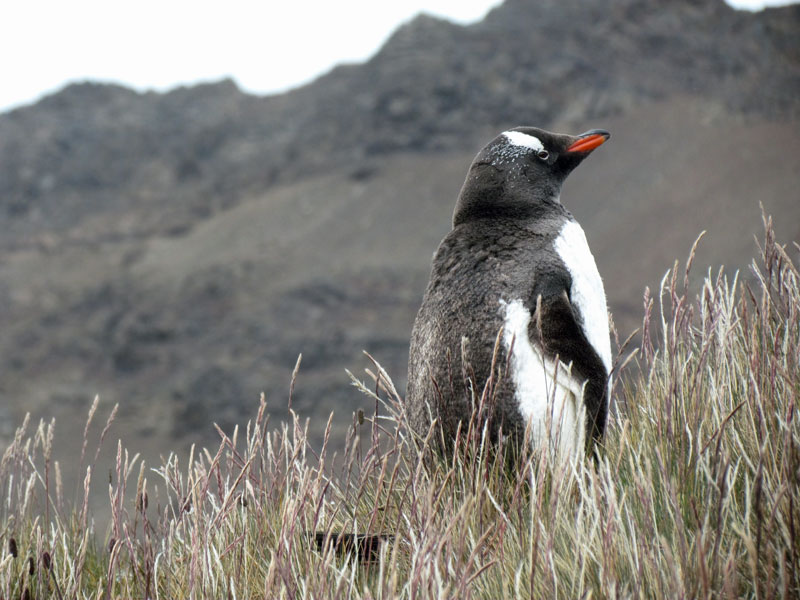
The weather next morning was gorgeous: uncharacteristic blue sky, and temperatures well above freezing. We landed near Half Moon Bay. Brilliant snow mountains and glaciers. Also penguins and seals. In the afternoon the captain carefully brought us to Deception Island , a remarkable place. It is a collapsed volcanic cone, with a gap (“Neptune’s Bellows”) where the ocean penetrates. It’s rather like Oregon’s Crater Lake, but with sea water. Lonely Planet calls it “one of the safest natural harbors in the world, despite periodic eruptions.” Such eruptions occur about every 40 years. The last was in 1971, Do the arithmetic... We landed anyway and hiked up to Neptune’s Gate, which gives a precarious rocky view of the ocean. A few of the more hardy or reckless passengers took a brief dip in the icy waters. We did not. I won’t say whether we saw any more penguins.
The last day of February was also our last on the peninsula. We arose at 6:30 to a temperature of 25°. With light snow falling, we took a zodiac cruise around Ciera Cove. We kept clear of the icebergs, some of them fantastically shaped. After lunch we made a final landing on Mikkelsen Island. Many Gentoos, including chicks, and seals. Skuas had landed, but were not visibly on the attack.
At 4:00 p.m. we weighed anchor and set out for Ushuaia. This required two days sailing north across the dreaded Drake Passage, which has some of the roughest seas anywhere. But it was in mild mode this time. Early the morning of March 3rd we disembarked the Plancius. It would be speedily tied up for departure that evening: straight down to the Peninsula this time and straight back. On the other side of the pier was our ship from the Arctic in 2013, the Akademik Ioffe.
Should you go? Only if you want to very badly. Although ship and crew do most things for you, you still have to contend with motion sickness, cold and icy conditions ashore. Not to mention a lack of internet. And polar trips are expensive. Just check the web sites. You can spend less than we did by either taking a shorter trip (you would miss South Georgia) or by going right to Ushuaia to see what’s available. Many boats have last-minute openings. They cost perhaps half what we paid, but that’s still a lot. If you happen to be a glaciologist or perhaps an expert on penguins, maybe you will be taken on for free as a special lecturer. You can also elect a “repositioning cruise,” in the shoulder seasons when the ships head north or south for the next summer. These tend to be longer and cheaper, but they take you places you may not want to go.
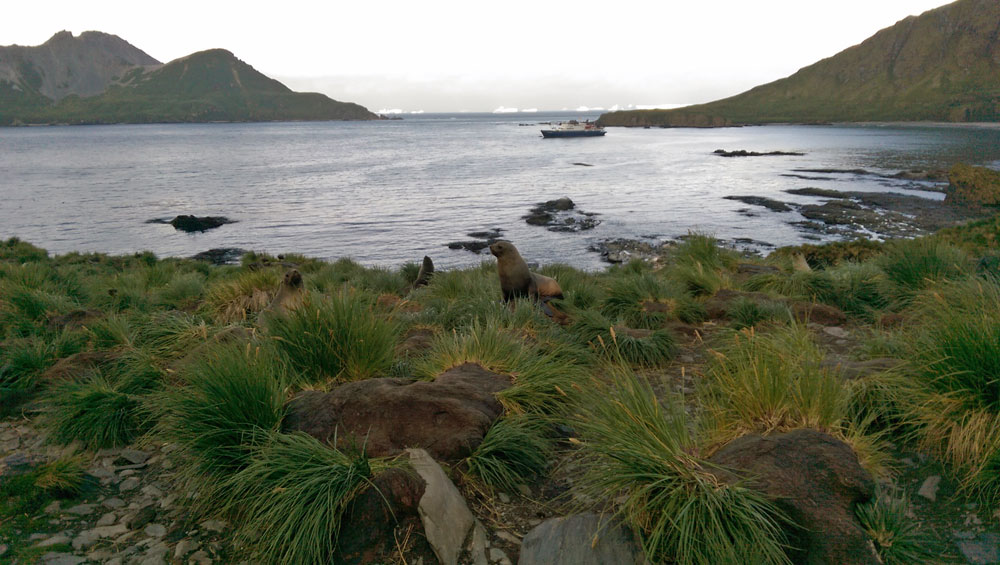
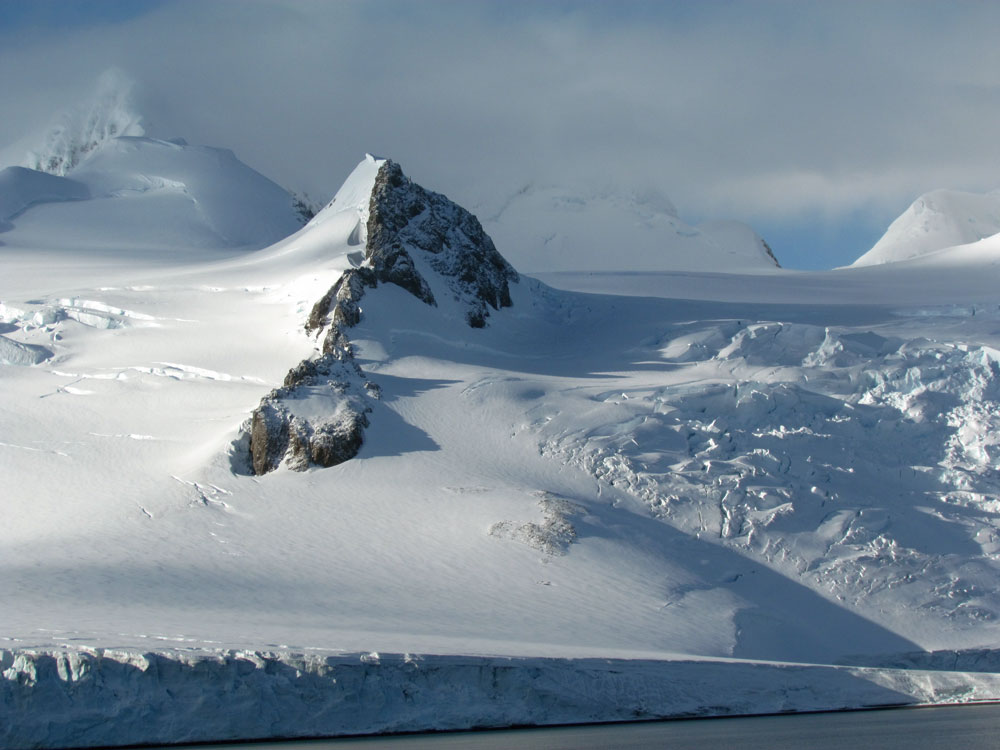
The Antarctic is protected by international treaty until 2041. After that, who knows? Our ship took exceptional care to avoid pollution. Before embarking on the zodiacs and on return, we had to scrub our boots in soapy water. Twice we were required to vacuum backpacks and anything else we wished to take ashore.
We thought that the ship lectures should have said more about climate change. When Susan made the point, she was told that everybody knows about it. Maybe they do in Europe. Whereas in the Arctic the glaciers are visibly retreating, the big Antarctic danger is the enormous ice shelves. Should they break loose and melt as they head north, sea levels will rise dramatically.
BEFORE:
We did not go directly to Ushuaia. We took an overnight flight to Santiago, then a short hop over the Andes to Mendoza, Argentina. We needed a few days of warm weather before heading south. The region is famous for its wine; we were probably the only visitors who did not pick up at least a few bottles. Note on Argentine currency: Because of its continuing economic troubles, the country remains fairly inexpensive for tourists. The official exchange rate was about 8.7 pesos to the dollar, but we got 10 from our hotel in Buenos Aires, 11 from a driver in Mendoza, 12 from Casa Glebinias Hotel Jardin, where we stayed; it’s 13 in the “blue market,” if you can find it. The Casa was a lovely place, a half hour from town. From there we were driven a couple of hours for my first look at Aconcagua, at nearly 23,000 feet the highest peak in the Western Hemisphere. I had always regarded it as a slag heap. Although it is high, its easiest route requires no technical climbing gear. But from our vantage point it was very impressive indeed: an enormous mass of rock studded with snowfields and glaciers. We had a gorgeous day and could only imagine the winds and foul weather that climbers must anticipate.
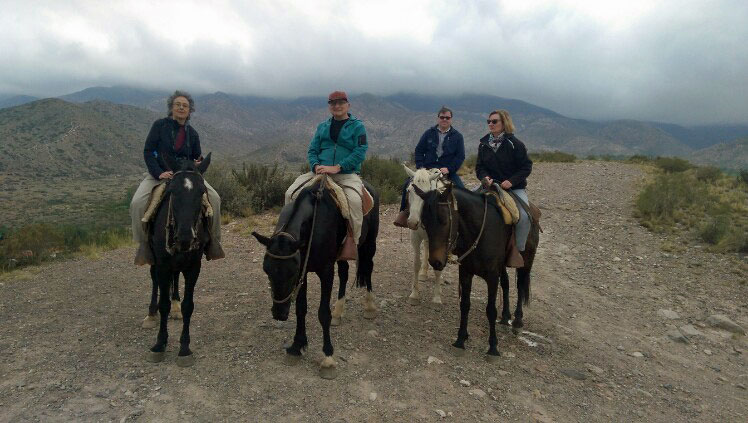
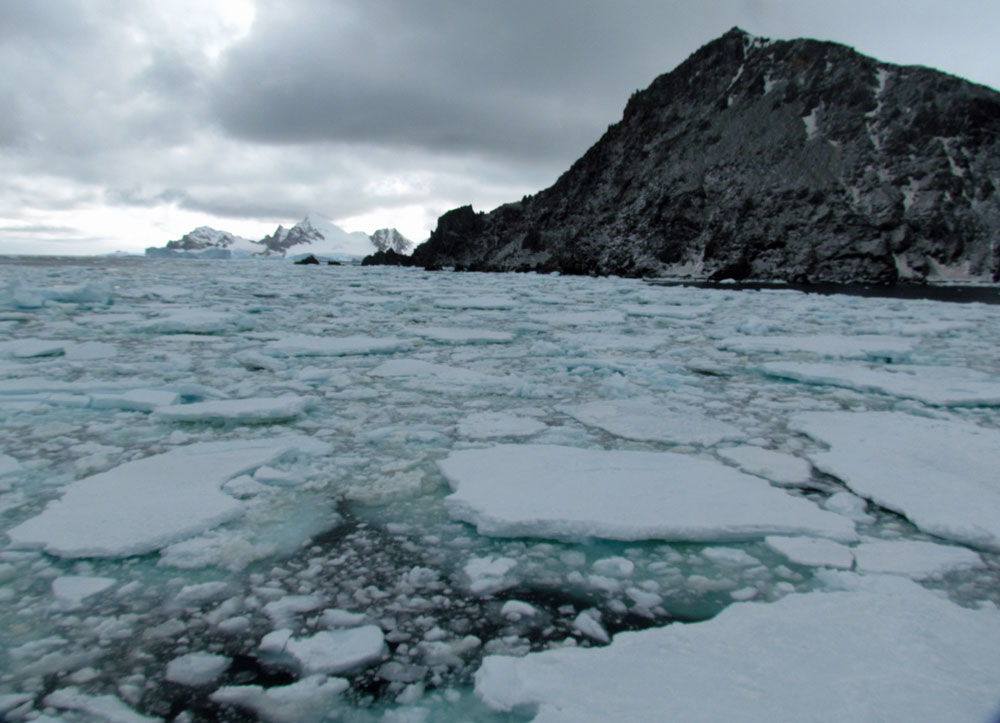
The following day Susan persuaded me to try a guided horseback ride. There were two other couples, British and Argentinian. The name of my horse was “Furia,” which alarmed me considerably. However he or she proved entirely docile as we slowly explored the high country. We then had a lunch of brisket and empanadas.
Before flying to Ushuaia (via Buenos Aires) we spent a night in town at the Hotel Vallagio. Dinner at Azancar, perhaps the finest restaurant in Mendoza.
AFTER:
The cruise ship provided free bus service to the airport for those leaving immediately. We instead spent the morning in Ushuaia, mostly at an internet café catching up on all the disagreeable news that we had missed. When we reached Buenos Aires that evening, we were happily met by our local weaving friend, Vanina Bujalter (her web site) . She drove us to our hotel, the Duque, a comfortable and extremely friendly little place. There we found waiting for us our Canadian travel agent, Jeff Pychel, whom we had met in the Arctic in 2011. He had been there a while and had charmed the staff. Jeff joined us for a very good meal at a nearby restaurant. In Buenos Aires, portions tend to be large. The next night we had dinner at Vanina’s home, with her parents, with whom she lives. Portions reasonable. The only problem was that they eat on Argentinian time, which means starting well after 8:00. Vanina drove us back to the hotel just before 11:00.
We went to some museums, to be sure. The flight home was on time, though to our dismay it went to Santiago first and took quite a while. And by the way: entry to Argentina currently requires a $160 “reciprocity fee” that must be paid in advance. That’s what we charge them, so they charge us back. At least it’s good for 10 years.
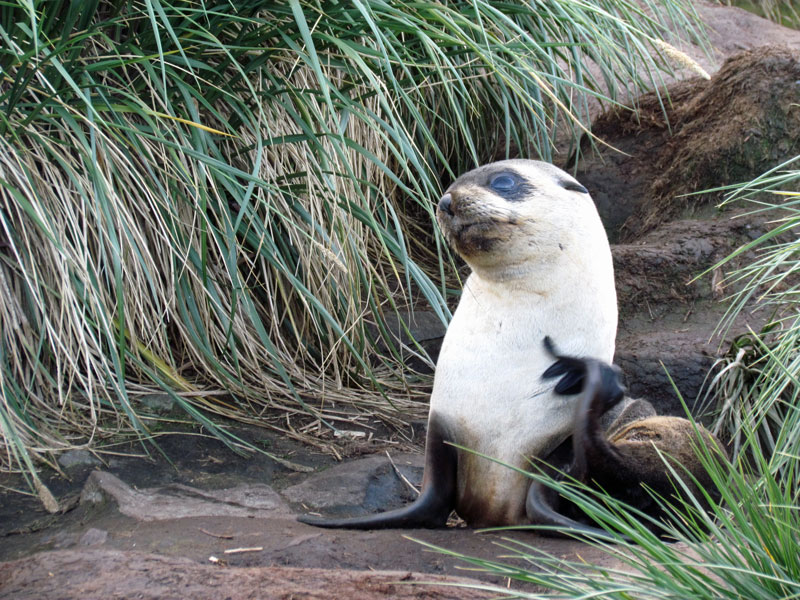
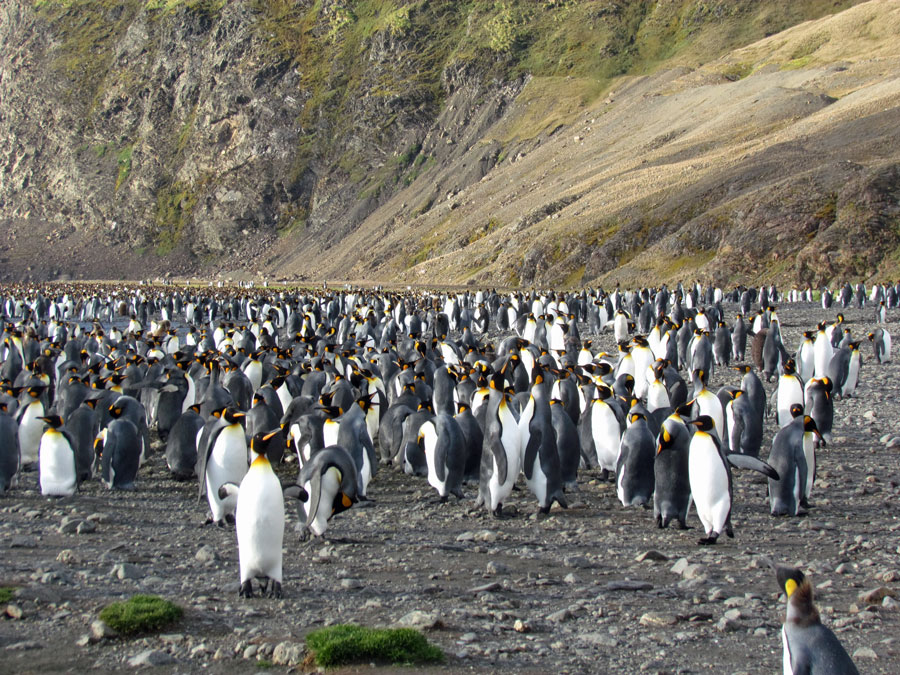
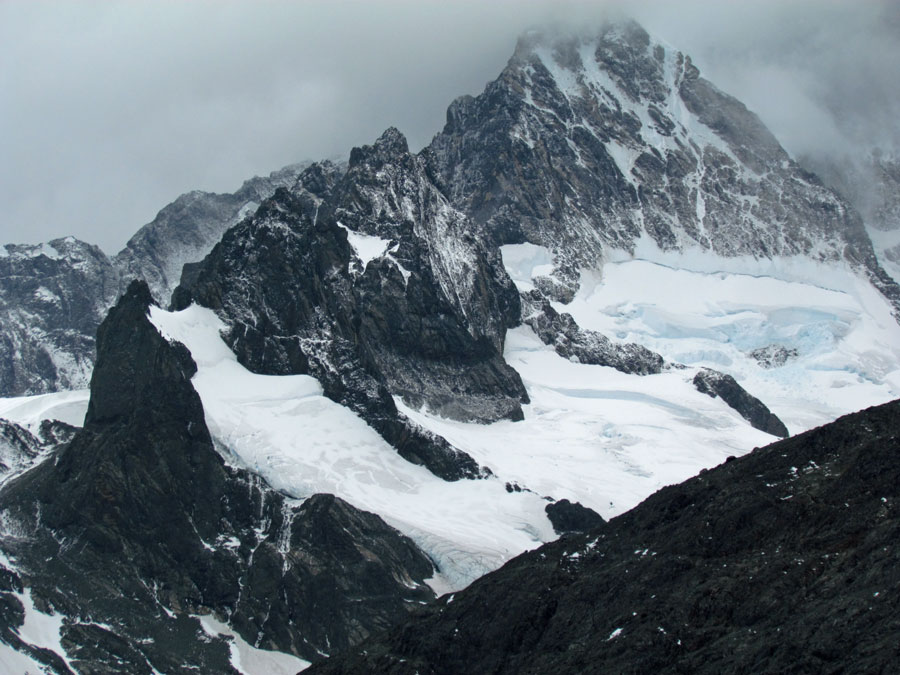
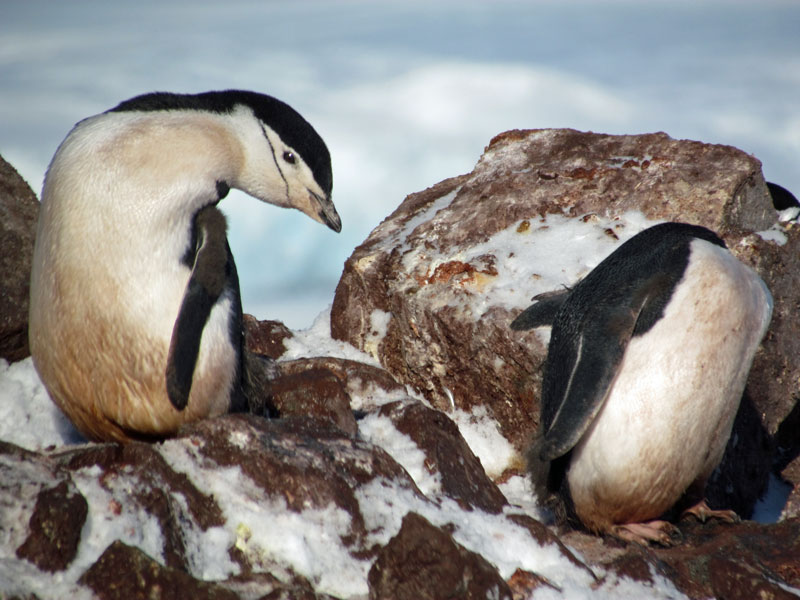
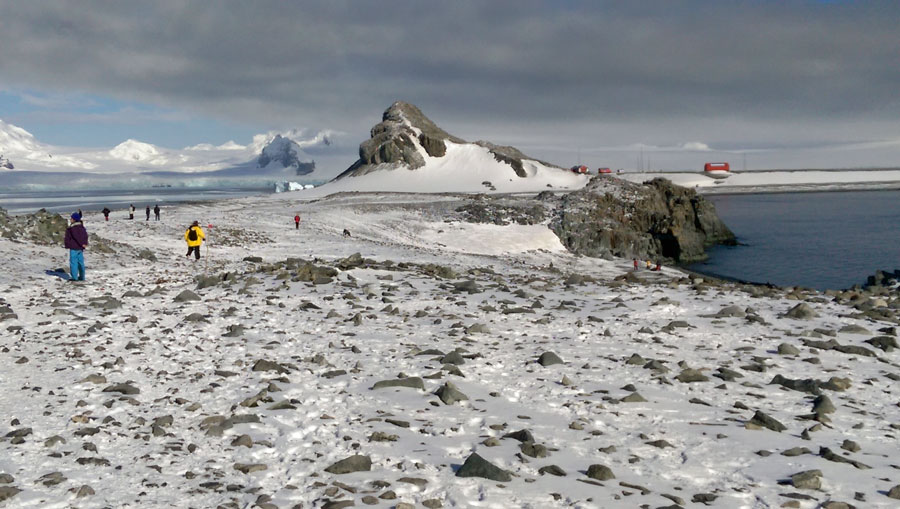
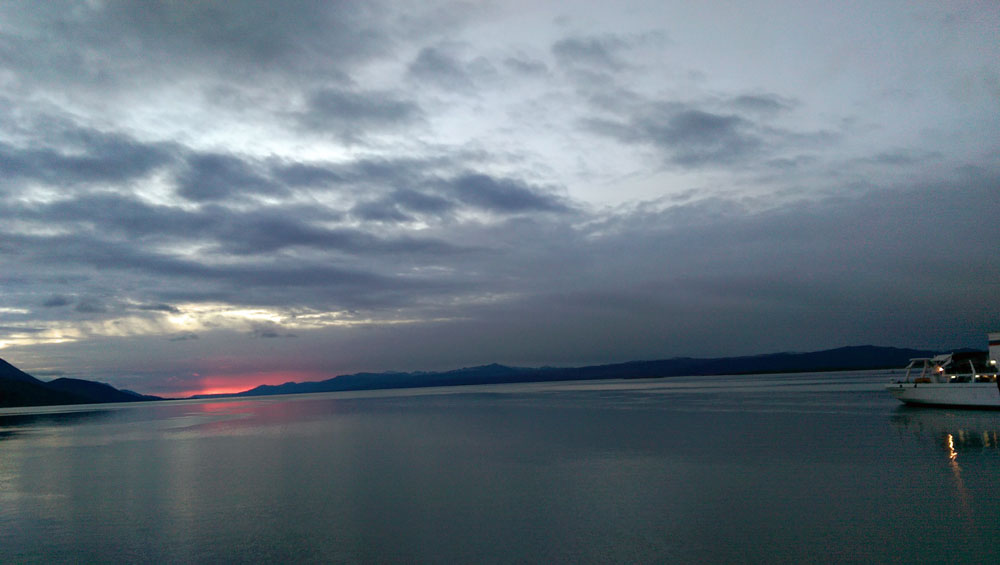
Return to Climbing page.
Return to travel page.
Return to home page.